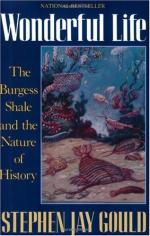
|
| Name: _________________________ | Period: ___________________ |
This test consists of 5 multiple choice questions, 5 short answer questions, and 10 short essay questions.
Multiple Choice Questions
1. When did Whittington publish a monograph on Yohoia?
(a) 1978.
(b) 1974.
(c) 1977.
(d) 1987.
2. What do the levels range from in the taxonomy of life?
(a) Phyla to species.
(b) Phyla to classes.
(c) Kingdom to species.
(d) Orders to genera.
3. How many levels are there in the taxonomy of life?
(a) None.
(b) Hundreds.
(c) Several.
(d) Few.
4. Who was America's "greatest paleontologist and scientific administrator"?
(a) Charles Doolittle Walcott.
(b) Charles Walmont.
(c) Charlie VanGuarden.
(d) Dr. Doolittle.
5. In what year did Leif Størmer describe the Burgess Shale arthropods in a treatise?
(a) 1989.
(b) 1959.
(c) 1987.
(d) 1960.
Short Answer Questions
1. What did Marrella and Yohoia still appear to be?
2. What kind of development were the Burgess animals first interpreted to have?
3. What did Whittington conclude about Yohoia in 1975?
4. When was the boundary between the Paleozoic and Mesozoic eras?
5. What could Whittington not figure out to do about Marrella?
Short Essay Questions
1. Why do paleontologists find Opabinia unbelievable and fascinating?
2. What is the boundary between the Paleozoic and Mesozoic eras famous?
3. How did Walcott's taxonomy have to be significantly updated?
4. How is the Marrella splendens described in relation to the other Burgess Shale fossils?
5. What was the difference between Simon Conway Morris and Whittington in the way that they worked?
6. Why did Gould write this book as an homage to the Burgess Shale?
7. How did Whittington try to uncover the bodily appendages of Opabinia?
8. What is the definition of decimation in the relation to the evolution of life?
9. What did using these new methods allow Whittington's team to do?
10. What is Chapter 3: Reconstruction of the Burgess Shale: Toward a New View of Life about?
|
This section contains 528 words (approx. 2 pages at 300 words per page) |

|




